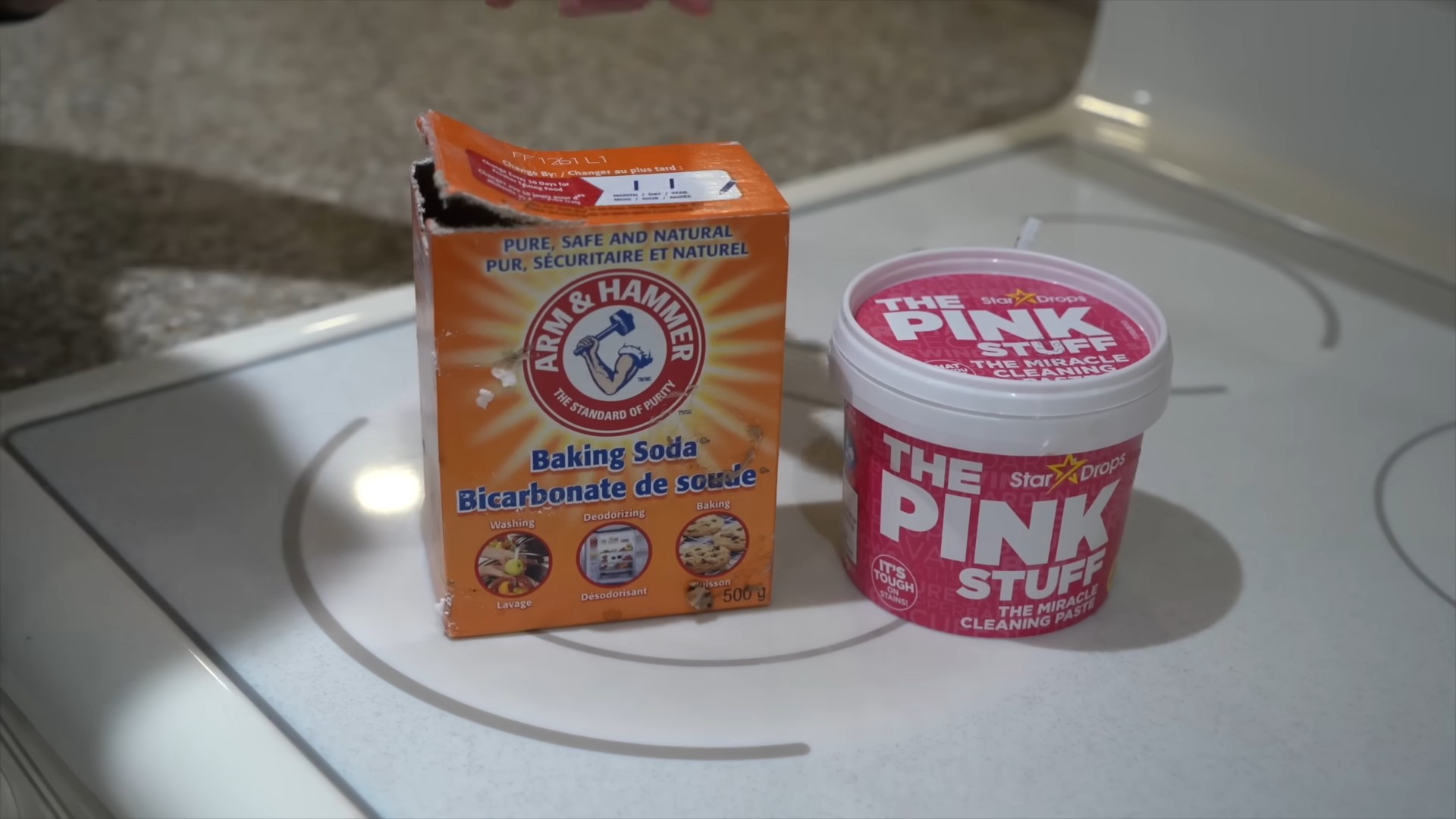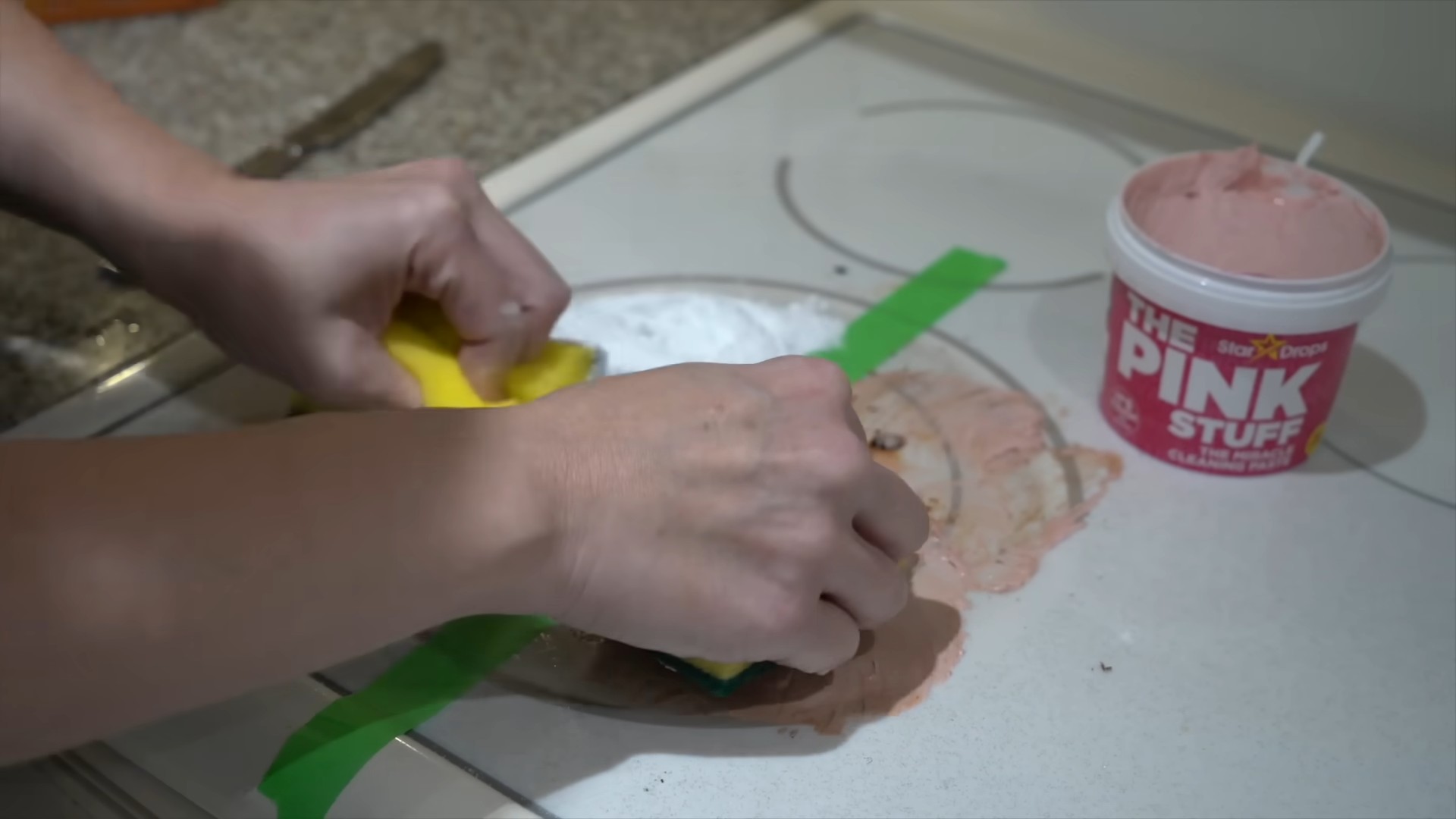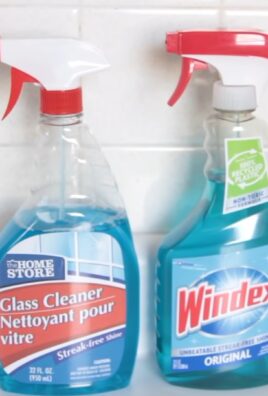Baking Soda Uses and Solutions: Unlock the magic in your pantry! Did you know that humble box of baking soda sitting in your kitchen is a powerhouse of potential, far beyond just baking? For generations, baking soda, also known as sodium bicarbonate, has been a staple in households worldwide. From ancient Egyptians using a natural form of it as a cleaning agent to its modern-day applications in everything from toothpaste to fire extinguishers, its versatility is truly remarkable.
But what if I told you that baking soda could also be your secret weapon for a sparkling clean home, tackling tough stains, and even boosting your beauty routine? In this article, we’re diving deep into the incredible world of baking soda uses and solutions, uncovering DIY tricks and hacks that will save you time, money, and a whole lot of elbow grease.
Let’s face it, nobody enjoys spending hours scrubbing stubborn grime or dealing with unpleasant odors. That’s where baking soda comes to the rescue! We’ll explore simple yet effective ways to harness its natural cleaning, deodorizing, and even exfoliating properties. Get ready to transform your home and your routine with these easy-to-follow DIY solutions. You’ll be amazed at the power packed into that little box!

Unlocking the Magic of Baking Soda: DIY Solutions for a Sparkling Home and Beyond
Hey there, fellow DIY enthusiasts! I’m so excited to share some of my favorite baking soda hacks with you. Baking soda, or sodium bicarbonate, is truly a wonder ingredient. It’s inexpensive, non-toxic, and incredibly versatile. Forget those expensive specialty cleaners and remedies – baking soda can handle a surprising number of household tasks! Let’s dive in and explore the amazing potential of this pantry staple.
Deodorizing Like a Pro
Baking soda is a natural deodorizer, meaning it doesn’t just mask odors; it absorbs them. This makes it perfect for tackling those stubborn smells around your home.
Freshening Up Your Fridge
That lingering onion smell in your refrigerator? Baking soda to the rescue!
1. Gather your supplies: You’ll need an open box or container of baking soda. I usually use a small, shallow dish.
2. Prepare the baking soda: Simply pour the baking soda into your chosen container. No need to add anything else!
3. Place it in the fridge: Put the open container of baking soda in the back of your refrigerator.
4. Replace regularly: For optimal freshness, replace the baking soda every month or two. I like to mark the date on the container so I don’t forget.
Eliminating Carpet Odors
Pet odors, stale smells, or just general carpet funk can be easily banished with baking soda.
1. Gather your supplies: You’ll need baking soda, a vacuum cleaner, and optionally, a few drops of your favorite essential oil (lavender or lemon are great choices).
2. Prepare the baking soda: If you’re using essential oils, add a few drops to the baking soda and mix well. This will give your carpet a subtle, pleasant scent.
3. Sprinkle generously: Sprinkle the baking soda evenly over the carpet. Don’t be shy!
4. Let it sit: Allow the baking soda to sit on the carpet for at least 30 minutes, or even better, overnight. The longer it sits, the more odors it will absorb.
5. Vacuum thoroughly: Vacuum up all the baking soda. You may need to go over the area a few times to ensure it’s completely removed.
Neutralizing Shoe Odors
Smelly shoes? We’ve all been there! Baking soda can help.
1. Gather your supplies: You’ll need baking soda and either socks or small cloth bags.
2. Fill the socks or bags: Fill the socks or bags with baking soda.
3. Place in shoes: Place one sock or bag filled with baking soda into each shoe.
4. Let it sit overnight: Leave the baking soda in the shoes overnight to absorb odors.
5. Remove and repeat: Remove the socks or bags before wearing the shoes. Repeat as needed.
Cleaning Powerhouse
Baking soda is a mild abrasive, making it an excellent cleaning agent for various surfaces.
Cleaning Your Oven
Oven cleaning is often a dreaded task, but baking soda makes it much easier!
1. Gather your supplies: You’ll need baking soda, water, a spray bottle, a sponge or scrub brush, and rubber gloves.
2. Make a baking soda paste: Mix baking soda with enough water to form a thick paste.
3. Apply the paste: Spread the paste all over the inside of your oven, avoiding the heating elements. Be generous!
4. Let it sit overnight: This is the key! Let the paste sit overnight to loosen the grime.
5. Scrub and wipe: The next day, use a sponge or scrub brush to scrub the oven. The grime should come off much easier.
6. Rinse thoroughly: Wipe away the baking soda residue with a damp cloth. You may need to rinse several times to remove all traces of baking soda.
Unclogging Drains
A clogged drain is a common household problem, and baking soda can often provide a simple solution.
1. Gather your supplies: You’ll need baking soda, white vinegar, and hot water.
2. Pour in baking soda: Pour about 1/2 cup of baking soda down the drain.
3. Add vinegar: Follow with 1 cup of white vinegar.
4. Let it fizz: Let the mixture fizz for about 30 minutes. This chemical reaction helps to break down the clog.
5. Flush with hot water: After 30 minutes, flush the drain with a pot of boiling water.
6. Repeat if necessary: If the drain is still clogged, repeat the process.
Polishing Silverware
Bring back the shine to your tarnished silverware with baking soda.
1. Gather your supplies: You’ll need baking soda, aluminum foil, a pot, and water.
2. Line the pot: Line the bottom of the pot with aluminum foil.
3. Add water and baking soda: Fill the pot with water and add 1 tablespoon of baking soda per cup of water.
4. Bring to a boil: Bring the water to a boil.
5. Submerge the silverware: Carefully submerge the silverware in the boiling water, making sure it touches the aluminum foil.
6. Let it sit: Let the silverware sit in the boiling water for a few minutes. You should see the tarnish start to disappear.
7. Remove and rinse: Remove the silverware from the pot and rinse it with water.
8. Dry thoroughly: Dry the silverware with a clean cloth.
Beauty Boosts with Baking Soda
Baking soda isn’t just for cleaning; it can also be used in your beauty routine! Always do a patch test before using baking soda on your skin, as it can be irritating for some people.
Exfoliating Facial Scrub
Gently exfoliate your skin with a simple baking soda scrub.
1. Gather your supplies: You’ll need baking soda and water.
2. Make a paste: Mix baking soda with a small amount of water to form a thin paste.
3. Apply to face: Gently massage the paste onto your face in circular motions, avoiding the eye area.
4. Rinse thoroughly: Rinse your face thoroughly with water.
5. Moisturize: Follow with your favorite moisturizer.
Teeth Whitening (Use with Caution!)
Baking soda can help to whiten your teeth, but it’s important to use it sparingly, as it can be abrasive. I recommend using this method no more than once or twice a week.
1. Gather your supplies: You’ll need baking soda and your toothbrush.
2. Sprinkle on toothbrush: Sprinkle a small amount of baking soda onto your toothbrush.
3. Brush gently: Brush your teeth gently with the baking soda for about two minutes.
4. Rinse thoroughly: Rinse your mouth thoroughly with water.
Soothing Bath Soak
Add baking soda to your bath for a soothing and relaxing soak.
1. Gather your supplies: You’ll need baking soda and your bathtub.
2. Add to bathwater: Add 1/2 cup of baking soda to your warm bathwater.
3. Soak and relax: Soak in the bath for 20-30 minutes.
Gardening Helper
Baking soda can even be used in your garden!
Sweetening Tomatoes
Believe it or not, baking soda can help to make your tomatoes sweeter.
1. Gather your supplies: You’ll need baking soda and water.
2. Make a solution: Mix 1 teaspoon of baking soda with 1 gallon of water.
3. Water your plants: Water your tomato plants with the solution once a week.
Controlling Mildew
Baking soda can help to prevent and control mildew on your plants.
1. Gather your supplies: You’ll need baking soda, water, and a spray bottle.
2. Make a solution: Mix 1 tablespoon of baking soda with 1 gallon of water.
3. Spray your plants: Spray your plants with the solution, focusing on areas that are prone to mildew.
Important Considerations
While baking soda is generally safe, there are a few things to keep in mind:
* Allergies: Although rare, some people may be allergic to baking soda. If you experience any irritation or allergic reaction, discontinue use immediately.
* Ingestion: While small amounts of baking soda are generally harmless, ingesting large quantities can cause stomach upset.
* Skin Sensitivity: As mentioned before, baking soda can be irritating to sensitive skin. Always do a patch test before using it on your

Conclusion
So, there you have it! Unlocking the power of baking soda goes far beyond just leavening your cakes. This humble ingredient, often relegated to the back of the pantry, is a veritable Swiss Army knife for your home, offering a multitude of uses and solutions that are both effective and surprisingly simple. From tackling stubborn stains and odors to creating gentle exfoliants and even boosting your garden’s health, baking soda is a true multi-tasker.
Why is this DIY approach a must-try? Because it’s economical, eco-friendly, and empowers you to take control of your home’s cleanliness and your personal care routine. You’re reducing your reliance on harsh chemicals, saving money on expensive commercial products, and contributing to a more sustainable lifestyle. It’s a win-win-win!
But the beauty of baking soda lies in its versatility. Don’t be afraid to experiment and adapt these solutions to your specific needs. For instance, if you’re using baking soda as a facial scrub, try adding a drop or two of your favorite essential oil, like lavender or tea tree, for added benefits. For a more potent cleaning paste, combine baking soda with a little white vinegar – just be prepared for the fizzing action! You can also infuse your baking soda with dried herbs like rosemary or lavender to create a fragrant carpet deodorizer.
The possibilities are truly endless!
We’ve covered a wide range of baking soda uses and solutions, but this is just the tip of the iceberg. The more you explore, the more you’ll discover the incredible potential of this unassuming powder.
Now, it’s your turn to put these tips into action. Start with one or two of the solutions that resonate most with you and see the difference for yourself. Whether you’re tackling a grimy oven, freshening up your carpets, or creating a soothing bath soak, we’re confident you’ll be amazed by the results.
Don’t just take our word for it – try these baking soda uses and solutions and experience the magic firsthand! And most importantly, we want to hear about your experiences. Share your successes, your challenges, and any variations you discover in the comments below. Let’s build a community of baking soda enthusiasts and unlock even more of its hidden potential together! We encourage you to share your before and after photos on social media using #BakingSodaSolutions and tag us! We can’t wait to see what you create!
Frequently Asked Questions (FAQs)
Is baking soda the same as baking powder?
No, baking soda and baking powder are not the same, although they are both leavening agents used in baking. Baking soda (sodium bicarbonate) requires an acidic ingredient, such as vinegar, lemon juice, or buttermilk, to activate its leavening power. When combined with an acid, it produces carbon dioxide gas, which causes baked goods to rise. Baking powder, on the other hand, is a complete leavening agent that contains both an acid and a base. It only needs moisture to activate. Using them interchangeably will likely result in a failed recipe. If a recipe calls for baking soda and you only have baking powder, you can use three times the amount of baking powder as a substitute, but the flavor and texture may be slightly different.
Can I use baking soda on all surfaces?
While baking soda is generally safe and gentle, it’s not recommended for use on all surfaces. Avoid using it on delicate surfaces like gold-plated items, as it can scratch them. Be cautious when using it on aluminum, as it can cause discoloration. Always test baking soda on an inconspicuous area first, especially on painted or varnished surfaces, to ensure it doesn’t damage the finish. For delicate surfaces, consider using a milder cleaning agent or consulting a professional cleaner.
How do I store baking soda properly?
To maintain its effectiveness, baking soda should be stored in an airtight container in a cool, dry place. Moisture and air can cause it to clump and lose its potency. A pantry or cupboard away from heat sources is ideal. Properly stored baking soda can last for several years, although its leavening power may gradually decrease over time. To test its freshness, add a teaspoon of baking soda to a small amount of vinegar. If it fizzes vigorously, it’s still active.
Is baking soda safe for cleaning my oven?
Yes, baking soda is a safe and effective way to clean your oven without harsh chemicals. To clean your oven with baking soda, make a paste of baking soda and water and spread it all over the interior surfaces, avoiding the heating elements. Let it sit overnight, then scrub away the grime with a sponge or cloth. For stubborn stains, you can add a little vinegar to the paste. Rinse thoroughly with water to remove any residue. This method is gentler than using commercial oven cleaners and doesn’t produce harmful fumes.
Can baking soda whiten my teeth?
Baking soda can help whiten teeth to some extent due to its mild abrasive properties. It can help remove surface stains and plaque, making teeth appear brighter. However, it’s important to use it sparingly, as excessive use can erode tooth enamel. Limit brushing with baking soda to once or twice a week and use a soft-bristled toothbrush. You can also mix baking soda with your regular toothpaste for a gentler whitening effect. Consult your dentist before using baking soda as a teeth whitening agent, especially if you have sensitive teeth or gum problems.
Is baking soda safe to ingest?
Baking soda is generally safe to ingest in small amounts, such as when used in baking. However, consuming large amounts of baking soda can be harmful and cause side effects like nausea, vomiting, diarrhea, and stomach pain. It can also disrupt the body’s electrolyte balance and lead to more serious health problems. If you’re considering using baking soda as an antacid or for any other medicinal purpose, consult your doctor first. People with certain medical conditions, such as kidney problems or high blood pressure, should avoid ingesting baking soda.
How can I use baking soda to deodorize my refrigerator?
Baking soda is an excellent natural deodorizer for your refrigerator. Simply place an open box or container of baking soda in the refrigerator to absorb odors. Replace the baking soda every month or two, or more frequently if you notice strong odors. You can also sprinkle baking soda on a damp sponge and wipe down the interior surfaces of the refrigerator to remove spills and odors. For particularly stubborn odors, leave a bowl of baking soda in the refrigerator overnight.
Can baking soda help with heartburn?
Baking soda can provide temporary relief from heartburn by neutralizing stomach acid. However, it’s not a long-term solution and should be used sparingly. To use baking soda for heartburn, dissolve a teaspoon of baking soda in a glass of water and drink it slowly. Be aware that baking soda contains sodium, so it may not be suitable for people on low-sodium diets. Frequent or excessive use of baking soda for heartburn can lead to side effects and may mask underlying medical conditions. Consult your doctor if you experience frequent or severe heartburn.
How do I use baking soda to unclog a drain?
Baking soda can be used to unclog a drain in combination with vinegar. First, pour about a cup of baking soda down the drain, followed by a cup of white vinegar. Let the mixture fizz for about 30 minutes, then flush the drain with hot water. The baking soda and vinegar react to create carbon dioxide gas, which can help dislodge clogs. For stubborn clogs, you may need to repeat the process or use a plunger. If the clog persists, it’s best to call a professional plumber.
Can baking soda be used to treat skin conditions?
Baking soda has been used to treat certain skin conditions, such as insect bites, poison ivy rashes, and sunburns, due to its soothing and anti-inflammatory properties. You can make a paste of baking soda and water and apply it to the affected area to relieve itching and irritation. However, baking soda can be drying and irritating to the skin, so it’s important to use it sparingly and avoid using it on broken or inflamed skin. If you have sensitive skin or a pre-existing skin condition, consult your dermatologist before using baking soda as a treatment.




Leave a Comment